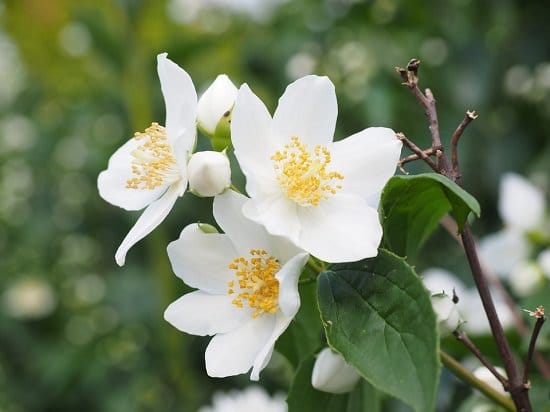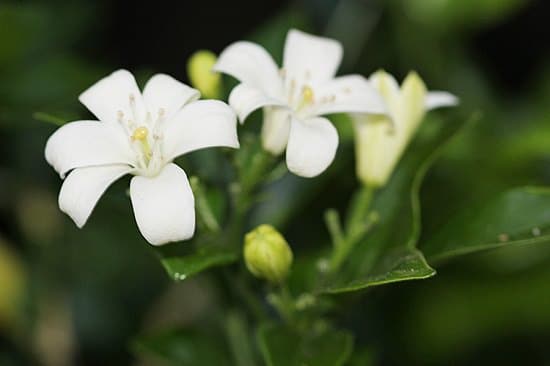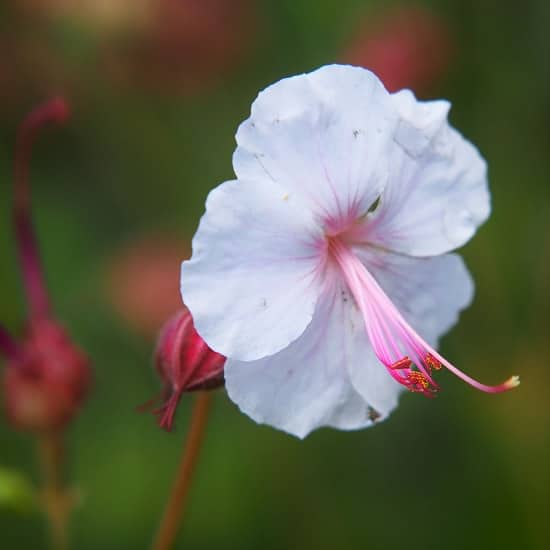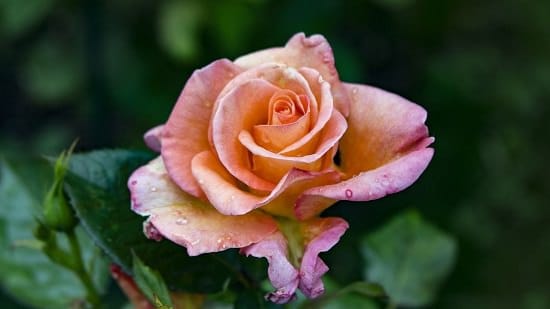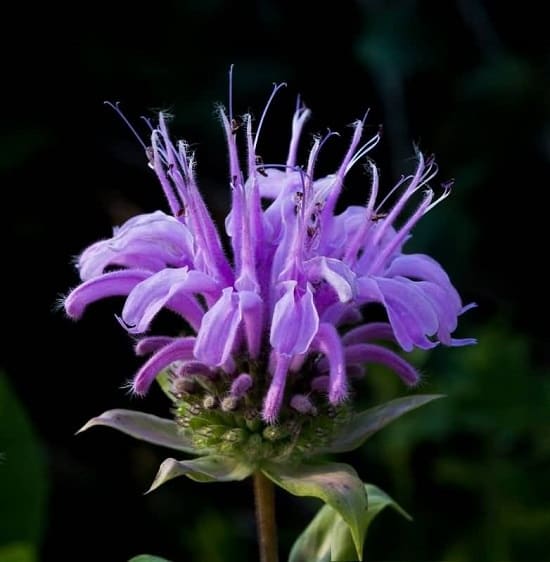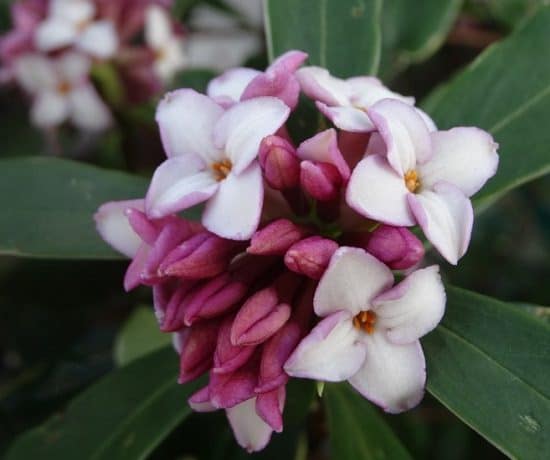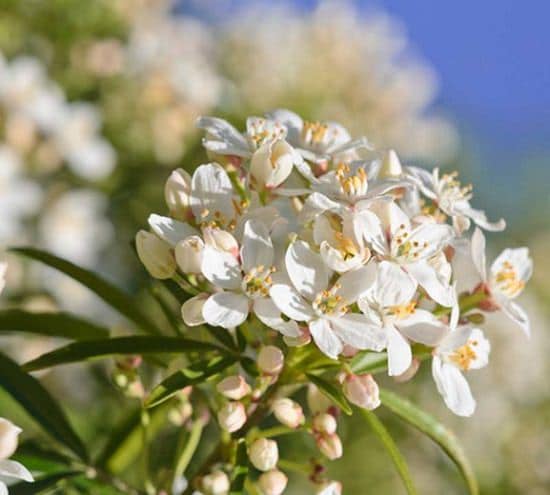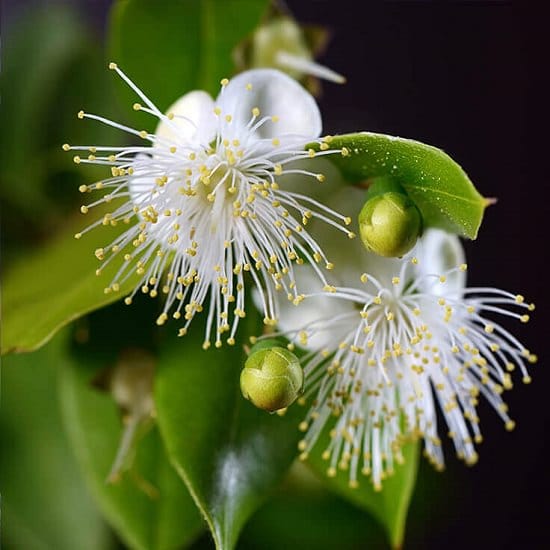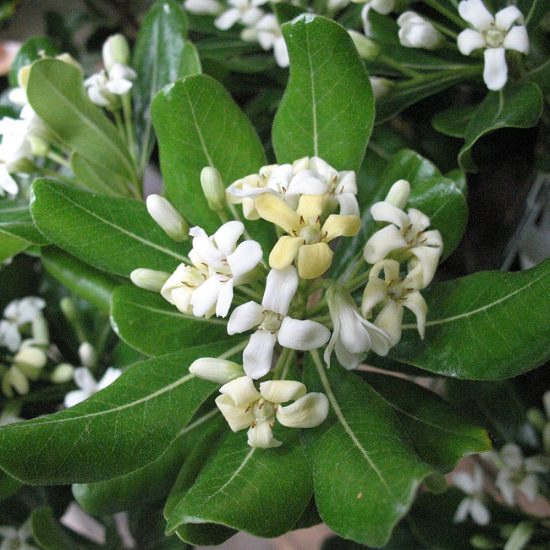Learn about 13 Best Scented Flowers that smell like lemon and orange. As citrus scents boost Serotonin (*a hormone that makes you happy), growing these fragrant plants can be rewarding.
Citrus scents are known to uplift mood and spirit. Also, they stimulate the nervous system, making you more alert, attentive, and happy. A study that supports this claim is here.
So having plants that bear lemon scented flowers or orange scented flowers in your garden or home is a great way to enhance your mood.
Check out our article on orange houseplants you can grow here
1. Lemon-Scented Geranium
Botanical Name: Pelargonium crispum
USDA Zones: 9-10
Native to South Africa, the foliage of this warm climate plant is also lemon scented just like the flowers. Although, the flowers are very mildly fragrant and showy than bedding geraniums. The leaves are fan-shaped and look attractive because of the crinkled edges. The plant has shrubby and hairy foliage and can reach a height of around 2 feet. It becomes a beautiful container plant, and those who live in a cool climate can grow this as an annual.
Growing Tips:
- The loamy and light soil is perfect.
- Place the plant where it receives at least 5 hours of direct sun. In a dry tropical region, protection from afternoon sun is essential.
- Provide a minimum spacing of 6 inches for adequate root growth.
2. Mock Orange
Botanical Name: Philadelphus coronarius
USDA Zones: 4-7
Mock orange is a small to medium size shrub that fits well in containers. The flowers are white with a refreshing orange-like smell and start to appear from summer. In the garden, it can also be used to provide a privacy screen or as a hedge plant.
Growing Tips:
- Growing mock orange is easy, it prefers growing in a sunny site.
- Soil that retains moisture must be avoided while planting the mock orange shrub as it doesn’t like wet feet.
- If you’re a container gardener, choose a medium to a large sized pot to plant it.
- We also added it in our list of best scented flowers, check it out here.
Also Read: Best Chocolate Scented Flowers
3. Gas Plant
Botanical Name: Dictamnus albus var purpureus
USDA Zones: 2-9
Also, known as burning bush shrub, it is not a common plant, and you’ll rarely come across it in the garden. This low maintenance perennial is slow to establish and almost takes three long years before it starts to flower. Foliage is bushy and forms the upright clusters of glossy green color, which are lemon scented. It bears showy, fragrant purplish flowers from early summer to the end of summer. It can grow between 40-100 cm high. An interesting thing you can try with it is igniting a matchstick below the spiky flower for a burst of methane gas.
Growing Tips:
- Get an old plant from a nursery so that you don’t have to wait long for flowers.
- It does well in full sun and partial shade.
- A little alkaline soil that is well-draining and rich in organic matter and does not become soggy is optimum.
- This plant is drought tolerant, water it moderately, and avoid overwatering.
- Due to its long taproot, do not move or divide the gas plant once it is established.
4. Orange Jessamine or Jesamine
Botanical Name: Murraya paniculata
USDA Zones: 9-11
This flowering shrub deserves the number one spot when it comes to best scented flowers that smell like lemon or orange. It is native to tropical parts of the Indian subcontinent and China, where it blooms heavily, year round. Grow this shrub in a container if you’re living in a cool climate to enjoy the warm scent!
Growing Tips:
- Growing orange jessamine shrub in a pot is easy.
- Place the shrub in sunniest site possible.
- Change the pot when it outgrows the existing container.
- Avoid overwatering and water moderately.
Also Read: how to keep flowers blooming
5. Bikovo
Botanical Name: Geranium x cantabrigiense
USDA Zones: 4-8
Bikovo is very common in Croatia. A hybrid of Geranium dalmaticum and Geranium macrorrhizum, it does not require much maintenance. The flowers appear from spring to summer and exhibit beautiful shade of white with a flush of pink at the center. The low spreading foliage gets a delightful shade of red in the fall. Both foliage and flowers have almost lemony fragrance.
Growing Tips:
- Plant it in a full sun or partial shade. It can tolerate full shade but doesn’t bloom prolifically.
- In hot climates, grow this plant as an annual.
- Plant it in the well-draining soil.
- Removing flowered stems and dead leaves regularly promotes the production.
6. Rose ‘Angel Face’
Botanical Name: Rosa angel face
USDA Zones: 5-10
Angel Face Rose is a hybrid floribunda rose that stands out well among the thousands of other hybrid rose varieties. Its stunning lavender colored flowers produce a strong and sweet fruity fragrance with notes of lemon. The blooms are bigger and fuller with around 30 petals per bloom.
Growing Tips:
- Growing it is similar to all the rose plants.
- Like other rose plants, it also requires basking in the full sun for around 6-8 hours.
- Add a layer of mulch to the soil, so it remains moist and cool.
- Take good care when the plant is young, once established, it will not stop blooming from spring to end of fall.
- In the spring, bud starts to form, boost your plant by the application of fertilizer.
- Check out our article for help.
7. Bergamot
Botanical Name: Monarda didyma
USDA Zones: 3-10
Bergamot is a herb, which also goes with the common names like Bee Balm, Monarda, Horsemint, and Scarlet Beebalm. It is called bergamot because of its bergamot orange-like fragrance. An ideal plant for herb, cottage or rock gardens! It also attracts pollinators like bees, butterflies, hummingbirds, and bumblebees, which is a bonus.
Growing Tips:
- It prefers well-draining moist soil rich in organic matter.
- It does equally well in partial shade and full sun.
- It is susceptible to powdery mildew so plant it at a place where air circulation is good.
- Get the detailed information on how to grow bergamot with our article.
8. Winter Daphne
Botanical Name: Daphne odora ‘Aureomarginata’
USDA Zones: 7-9
Just like the sirens of Greek mythology that lures fellow travelers, winter daphne lures the gardeners with its sweet fragrance. Some people say that the fragrance somewhat resembles lemonish vanilla while some believe there is no trace of citrus in it. Whatever the case might be, no one ever said that the fragrance is not alluring.
Growing Tips:
- It does well in well-drained and moisture-rich soil. Make sure to add ample amount of organic matter to it.
- Place the plant in partial sun.
- Prune the plant lightly and only when necessary as deep pruning may hinder the plant growth.
9. Chinese Perfume Tree (Mock Lemon)
Botanical Name: Aglaia odorata
USDA Zones: 9-11
The everblooming Chinese perfume tree never stops showing its fragrant bright yellow blossoms when the weather is warm, the notes of lemony scent makes it an amazing addition to a fragrant garden. It grows best in the hot tropical areas. In cooler regions, it’s often sold as a houseplant as it is quite adaptable to indoor conditions.
Growing Tips:
- The mock lemon tree prefers full sun to partial shade but adapts well to low light conditions as an indoor plant.
- Keep it near a South facing window, if growing as a houseplant.
- It can grow up to five meters tall (around 15 feet), but you can easily maintain the height and grow it in a large container.
- Use light soil that is rich in organic matter and drains well.
- Water the soil deeply but moderately, only when the topsoil is dry.
10. Mexican Orange
Botanical Name: Choisya ternata
USDA Zones: 7b-11
Choisya an evergreen small sized dense shrub that doesn’t grow above 6-8 feet tall. It’s heavenly citrus scented flowers are similar in appearance and fragrance of orange blossoms, which is why it is known as Mexican Orange.
Growing Tips:
- Mexican orange is a wonderful small shrub to add in your container garden collection.
- It requires full sunlight, but in hot climates, save the plant from afternoon sun.
- Choose a spot that is protected from cold drafts and strong winds.
- Water moderately, the plant doesn’t mind sitting in slight moisture.
11. Iris ‘Blue Rhythm’
Botanical Name: Iris croatica
USDA Zones: 3-9
As the name suggests, blue rhythm produces flowers in the gorgeous shade of blue. It’s a sight to withhold, the pencil-shaped buds unveil and spread vibrant colors in the warmth of spring. The majestic plant continues to add drama in the garden with its sword-shaped foliage after the flowering season. The best part is the flowers are lemon-scented. Resting at the top, granting the overall 40 inches height to the plant.
Growing Tips:
- Flavescens, Polygonatum odoratum ‘Lemon Seoul’, Sambucus nigra ‘Black Beauty’ and Black Lace are some other iris cultivars with citrus-like fragrance.
- Direct sunlight of around 6 hours is required for the optimum growth.
- Check out this helpful growing guide for more info.
12. Lemon Myrtle
Botanical Name: Backhousia citriodora
USDA Zones: 9-11
This Austrailian plant produces the showiest flowers among the lemon-scented flowers in this list. In the growing season, the creamy white flowers appear in clusters. Lemon myrtle leaves have the highest amount of citral, a compound that is responsible for the citrus scent. Its leaves are used for many medicinal, cosmetic, and household purposes.
Growing Tips:
- It can grow from cuttings and seeds.
- In a mild climate, it tolerates full sun but in a hot tropical region, grow it in a dappled shade.
- Soil should not be waterlogged but slightly moist.
13. Japanese Cheesewood
Botanical Name: Pittosporum tobira
USDA Zones: 8-12
Also called Japanese mock orange, Japanese cheesewood or Australian Laurel. It’s a low maintenance plant, perfect for coastal areas and containers. The sweet citrus scented flowers appear in clusters for a short time. But it provides year-round interest with its attractive foliage with the glossy and leathery texture on the upper side and a lighter undertone on the underside.
Growing Tips:
- The plant is low maintenance and tolerates frost to some extent.
- Apart from the overly wet and hard to work soil that retains water, it doesn’t mind the texture.
- It thrives well in both full sun and partial shade.
- Check out the detailed article on our website here!


